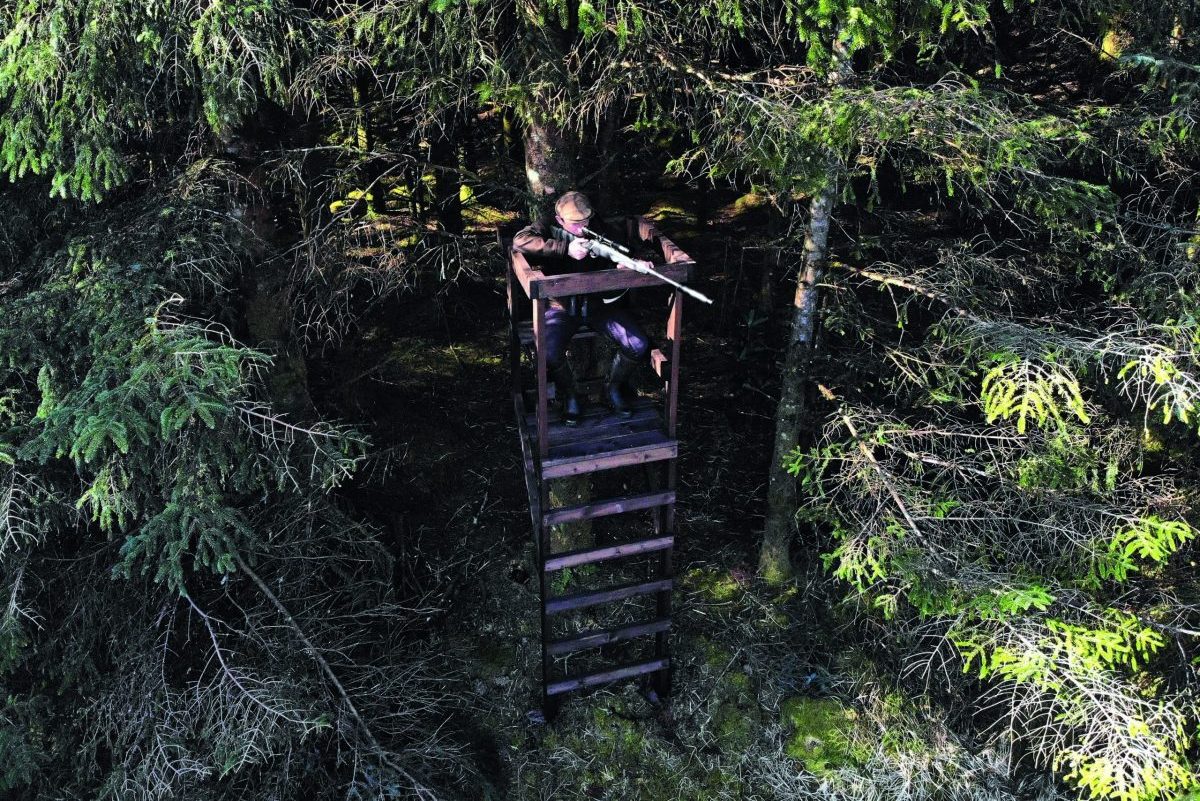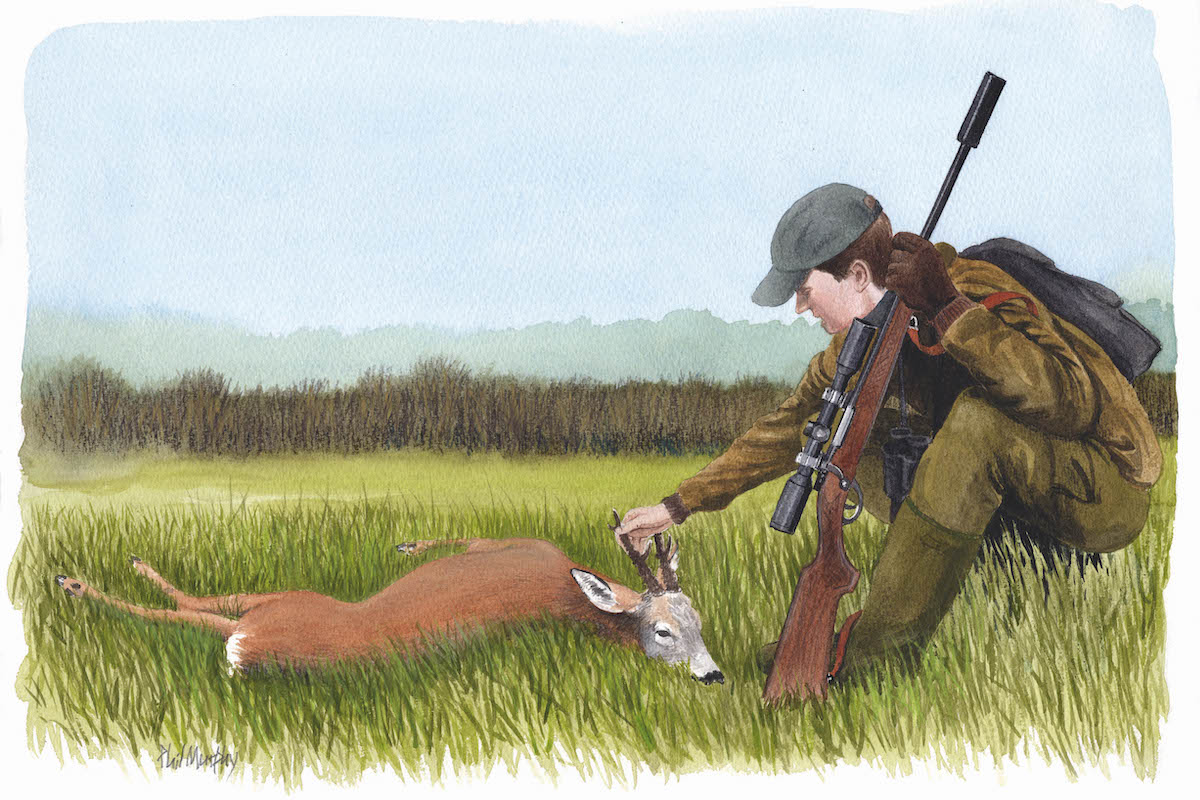How a stalking diary can be a useful asset
Looking back on old stalking diaries can throw up a few surprises, as Barry Stoffell discovers when he sets about digitising his entries

My first stalking diary was a Christmas present from a family friend. Her husband had kept them his entire sporting life, and she was keen, I think, that I should not miss out on the great joy that he derived from leafing through their pages in later years. It was a hardbound thing of beauty, and although I have occasionally reflected that the desire to preserve a matching set has cost me dearly over the years, I am deeply indebted to her for the thought.
I started out quite ambitiously, assiduously recording everything from the temperature to the phase of the moon. After a couple of seasons, it ceased to be a chore, and now, years later, it has become such a rewarding part of my stalking life that not only would it be anathema to me not to record the details of every outing, I wholeheartedly encourage others to do likewise.

Digitising his diary entries allows Barry Stoffell to analyse the data around each stalk
Idle curiosity
In autumn 2021, when a lot of the actual stalking was stood down, I began digitising my diaries. By the time the 2022 to ’23 season wound to a close, I had completed the best part of the past decade. I embarked on this project more out of idle curiosity than any real quest for answers of any kind, although the scientist in me did perhaps enjoy the prospect that my stalking might produce ‘data’ as well as venison.
The information, once in a spreadsheet, provided answers to some questions that I had often asked myself; some of these were obvious, others a little surprising. Of course, I am aware that the collated information from one man’s game diaries lies somewhere in the murky no man’s land between anecdote and actual statistics, dealing with, at last count, eight seasons stalking mostly sika in Co Kerry, but nonetheless I felt that the results were interesting enough to warrant sharing them.
Lucky October
To start with, filed under ‘bloody obvious’, October has historically been my most successful month. Anyone could have told you this — the sika rut begins at this time and, with self-preservation overridden, the stags are more easily won in this month than any other, and outings are successful more often than not. Although I didn’t have a chance to cross-reference the onset of the sika rut with the weather on days I wasn’t stalking, there’s a strong correlation between warm temperatures on stalking days in October and a belated rut, supporting the belief that a snap of cold weather gets the action underway.
November is my second most successful month, covering as it does the latter parts of the rut and the opening month of the hind season when the easy wins are taken.
Howling at the moon
As far as the weather is concerned, I can now state confidently that in Co Kerry, sika are not remotely bothered by rain. Even heavy downpours do not appear to have any significant impact on my chances of success, which is just as well in a part of the world that sees over 200 wet days a year; during the stalking season from September to February it is far more likely to be raining than not.
More interesting is the fact that windy conditions appear to be considerably more productive than calmer days; one presumes that this is due to the fact that once you get the hang of it, it’s a bit easier to approach deer with a wind up. In and around plantation forestry, where much of the action takes place, a good stiff breeze can also offer a bit of noise to cover your approach.

Barry finds that solo stalking is not as successful as shared outings, though mornings yield the best results
When it comes to astrological portents, it turns out that (for me, at least) a full moon is bad news. I know at least two stalkers who swear blind that there’s no point stalking at this time in the lunar cycle, and plenty more who’d scoff at the notion that it makes any difference at all.
But to my surprise it turned out that, of 11 trips in eight years during a full moon, only one of these had yielded a deer. This is far below even my modest batting average, and yet I had remained oblivious to this fact. This was possibly because the single instance was so memorable — a late November stag on a crisp, clear evening high on a rugged mountainside above the Kenmare Bay, followed by a slow and careful drag down the hillside by moonlight as the lights in the village flickered on beneath me.

Much joy can be derived from leafing through old diaries and rekindling past memories
Better together
It didn’t surprise me to learn that I stalk in the morning almost twice as often as in the evening; this is largely a conscious decision on my part and has more to do with preferring to deal with any issues that arise in daylight rather than darkness. Many areas I work in are also rather remote, and recovering carcasses over steep or broken ground is undoubtedly less tricky in daylight. However, the figures provided an extra incentive to get up early, since it transpires that my stalking is almost 20% more likely to result in success in the morning than in the evening.
I did find it curious, however, to note that while I do the majority of my stalking alone, my chances of success are considerably higher (14%) when stalking with others. If asked, I would actually have guessed the opposite, but this is perhaps due to the fact that unsuccessful days in company tend to stick in my mind, through some vague sense that I had disappointed someone, whereas I’m never too bothered if I draw a blank alone.
Stalking hinds is considerably less successful than stags, on average, per trip (sika hinds are a notoriously challenging quarry), but this is mitigated somewhat by the fact that a hindstalk is much more likely to result in multiple carcasses. There’s nothing particularly surprising here as hinds and calves are often culled together, or multiple hinds from a group.
Runners
I have also recorded, where possible and to the nearest five yards or so, the distance that an animal ran following the shot. I mention this as I switched to non-toxic ammunition four years ago, and I am aware of a faction of naysayers who still maintain that copper bullets ‘don’t work’. Although the data set is modest, there was absolutely no difference whatsoever in the distances covered by stags or hinds shot by copper as opposed to lead-cored bullets.

Windy conditions appear to be the most beneficial, making it easier to approach deer
The stags that ran covered an average distance of 45 paces, while hinds made 30 paces. The furthest run was made five years ago by a fine beast that I remember vividly — a monster six-pointer that covered almost 150 paces. It had come in to the call and its blood was fully up; on inspection of the carcass I was amazed to find that its head-down charge had been made despite the shot finding his heart, deepening the already profound respect I had for these remarkable creatures.
Stags were much less likely to run, but delving into the notes this is almost certainly due to shot placement; most stags are neck-shot, being both larger targets and more likely to present in a favourable position for this, whereas hinds would more often be culled with a heart/lung shot that left a chance of a short dash.

October is consistently Barry’s most successful month, coinciding with the start of the sika rut
Fresh memories
If you don’t currently keep a game diary, I would strongly encourage you to start one. Reviewing my old notes has reminded me why I kept them in the first place; each page jogs fresh memories, rekindles experiences and takes me right back to some of the happiest times in my sporting life. I guarantee you won’t regret it.
In closing, I’ll leave you with my favourite statistic of them all, and one which, to my mind, more than justifies the effort of the project. In the past eight years, with the exception of a little wobble in the 2018/19 season (that I am, of course, ascribing to El Niño), my stalking has become more successful, albeit marginally, on a per-outing basis, every year.
I proudly presented this fact to a jury of my peers in the local pub last month, and was immediately offered a handful of explanations; the deer are becoming more plentiful, or perhaps I was getting to know the areas I managed better and the habits of the deer populations. Despite these being perfectly valid reasons, I have decided to ignore them all and go with a more radical and far less likely interpretation.
Perhaps, after all this time, I’m actually getting better at it?








